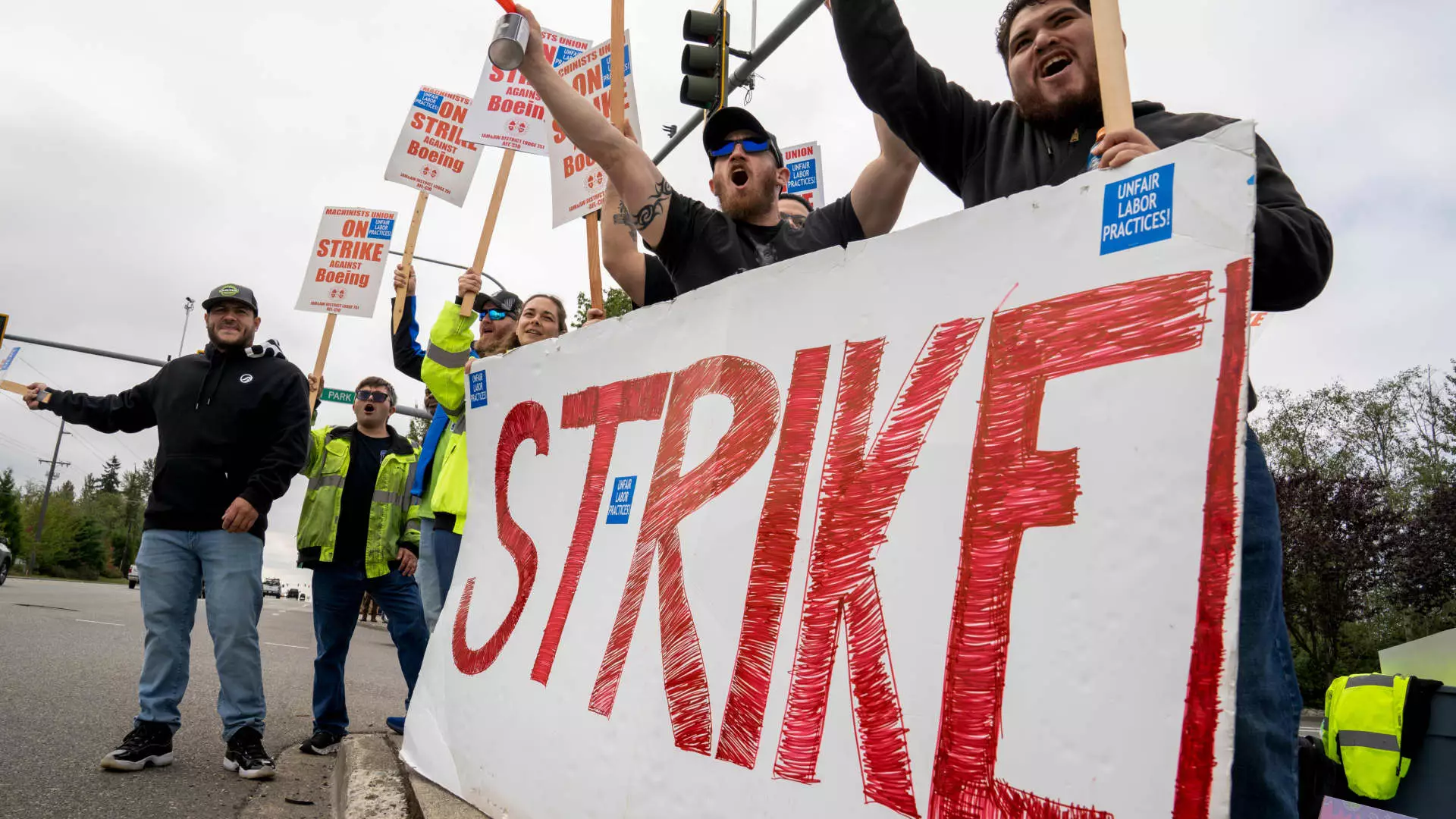Boeing’s recent efforts to resolve an escalating labor dispute highlight the complexities and stakes involved in its negotiations with the International Association of Machinists and Aerospace Workers. As the strike enters its second week, Boeing has proposed what they describe as their “best and final” contract offer to over 30,000 machinists, implementing a range of adjustments aimed at improving compensation structures. This offer not only implies a substantial wage increase but also reinstates annual bonuses and introduces a more lucrative one-time payment upon ratification, which has now doubled to $6,000.
The revised proposal includes a 30% general pay increase over four years, exceeding the prior proposal of 25%, indicating Boeing’s acknowledgment of the financial pressures workers face, particularly in relation to the rising cost of living in the Seattle area. The leadership’s revised stance suggests an internal recognition of the urgency to end the strike, especially given the stranglehold it has on aircraft production.
As analysts estimate the strike’s financial toll on Boeing to be around $50 million per day, the pressure on Boeing’s management, particularly new CEO Kelly Ortberg, continues to mount. The implications of a prolonged strike are severe; not only do they affect production and operational capabilities, but they also carry the risk of downgrades from credit agencies, further impacting Boeing’s standing in the financial markets. The situation is compounded by the fact that this strike marks the first of its kind since 2008, signifying a critical moment not just for Boeing’s labor relations but for its market position.
In response to the strike, Boeing has sought to mitigate losses by implementing a series of cost-cutting measures, such as restricting nonunion employees’ activities and enforcing a hiring freeze. Such drastic steps illustrate the high stakes metaphorically on the picket lines, revealing both the company’s need to control expenses and the workers’ resolve to push for better compensation.
Feedback from workers indicates a deep-seated dissatisfaction with past proposals, as evidenced by a striking 94.6% vote against the previous contract, which had originally received union endorsement. Many machinists have voiced their commitment to enduring the strike, even resorting to secondary income sources to ensure financial stability during what they anticipate could be an extended conflict. This sentiment is reflected in the comments made by union leadership, emphasizing that the new proposal reveals Boeing’s potential for more progressive compensation strategies.
The union’s response to the latest offer remains cautious, as they continue a thorough review process. The tension between company leadership and union representatives underscores a broader workplace struggle, emphasizing the need for a balance between corporate profitability and equitable worker compensation. This negotiation landscape is further complicated by external economic pressures in the Seattle area, as workers’ demands are not merely about immediate pay increases but about ensuring their wages reflect the realities of modern living costs.
As the deadline for ratification approaches, both Boeing and the union must navigate a multifaceted situation that involves economic pressures, worker satisfaction, and long-term strategic goals. The importance of reaching a resolution rapidly cannot be understated, as the consequences of continued stalemate could resonate across the industry for years to come. The unfolding events serve as a reminder of the intricate dynamics at play in labor relations and the critical importance of fostering a collaborative approach to resolve conflicts that are deeply rooted in economic realities.

